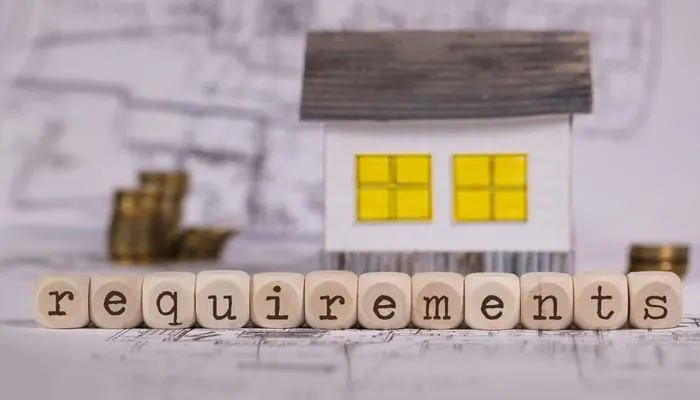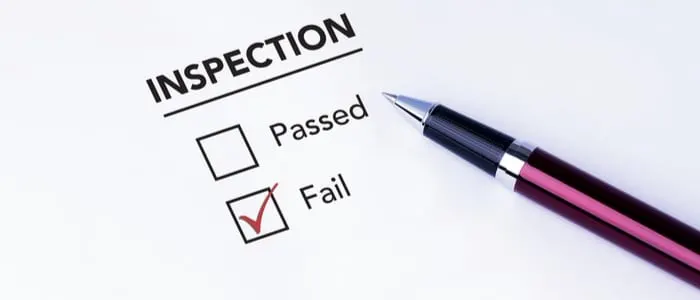VA loan inspection requirements are very important to understand, as they can cause you to miss out on getting a government-backed home loan. Read on to learn all you need to know.
What Are VA Loan Property Requirements?
The VA has developed a list of Minimum Property Requirement (MPR), and the home must meet these requirements to qualify for a VA mortgage.
During the appraisal process, the home appraiser will conduct a home inspection to ensure it meets the MPRs. But don’t worry; the VA inspections aren’t unattainable. In fact, their requirements usually mirror those of HUD standards.
Regardless, it’s important to ensure the property meets these standards. It’s so important, in fact, that the VA won’t give you a loan on a house that doesn’t meet the MPRs.
This is simple because a home that doesn’t meet them is most likely an unsafe place to live. If you’re even considering getting a loan from the VA, read on to learn everything you need to know about the home inspection requirements.
VA Loan Minimum Property Requirements

Tolikoff Photography/Shutterstock
During your home inspection, the VA will look at many things. These are mostly health and safety-related, but others deal with residential code and overall quality of life. The inspector will check your property for:
Adequate Living Space
The home you want to buy using a VA loan should be zoned as a residential property. This shows up on the appraisal report, which also notes the local building codes.
This means that you can’t use a VA loan to finance office buildings. Moreover, the home should have adequate space for carrying out the basic functions of life.
There should be enough room for cooking, living, and sleeping. Crawl spaces will also be inspected, though they are almost always unusable.
Drinking Water
As you’d probably expect, your home must have clean drinking water. If the home utilizes a well system, the water must be tested to determine if it is safe for consumption.
Sewer And Plumbing Systems
The sewage and plumbing systems within the house should be working. If a septic system is installed on the home, the appraiser will want to see that it is working properly.
Also, check the age of the water heater and the temperature of the hot water. This will be noted in the inspection report.
Adequate Heating
In order for a home to qualify as a safe place for living, it must have adequate heat, regardless of the location.
The HVAC system should be able to heat the home in the winter. If there are any wood-burning stoves, this will also be noted.
Infrastructure Issues
The home appraiser will look for signs of defective construction. The property won’t qualify for a VA loan if major cracks are found in the home’s foundation or if other structural issues exist.
Moreover, any signs of a required foundation repair can disqualify the home from receiving VA financing.
Free Street Access
The homeowner must be able to enter and exit the home without trespassing on another person’s property. A permanent easement or private driveway must be established.
If there is a shared driveway, a written contract regarding use and maintenance between the two owners may be required.
Pest-Free
A thorough termite inspection may be required to ensure the property is pest free. The VA appraiser will ensure the home doesn’t suffer termite damage.
A termite inspection is mostly carried out for homes that are located in areas that are prone to termite infestation. The buyer isn’t required to pay for a terminate inspection.
However, they can pay for the repairs if the seller won’t. and they still want to buy the property.
Adequate Roofing
The roof should be free from all defects. If it’s in bad condition or in need of repairs, the property may not qualify for a VA loan.
This is simply because an old or damaged roof can cause water damage (and thereby mold), making the home potentially inhabitable.
Safe Electrical Systems
The electrical system must be usable and safe. Minor electrical glitches won’t pose an issue. However, if the entire wiring is old or not done to code, it can lead to serious property damage and even occupant death.
What If a Home Doesn’t Meet VA Requirements?

Shamleen/Shutterstock
Again, a VA appraisal is carried out to ensure that the home is safe and meets minimum standards. This is for your safety and to hedge the VA’s downside, as they are guaranteeing the loan.
Sometimes, your ideal home may not live up to these requirements. This doesn’t mean that you will lose financing; rather, any outstanding issues must be addressed prior to closing.
Depending on the issues, the home seller might be willing to make the required repairs. If not, you can always pay for the repairs out of your own pocket.
Either way, the VA minimum property requirements must be met if you want to secure financing on the home with your veteran’s benefits. Remember, these requirements ensure the property is safe and sound.
If a home doesn’t meet the minimum property requirements, you should consider whether it’s even worth buying, for your own safety and peace of mind.
If you don’t think a particular home is right for you, don’t panic. We know you’ll find the perfect one.
So, What Are VA Loan Inspection Requirements?
Well, there you have it. The VA loan inspection requirements are simple but should not be taken lightly. If a property doesn’t meet these requirements, you have ample opportunity to fix any issues.
If the seller isn’t willing to help, chances are the home isn’t right for you, so keep looking. And of course, make sure to check out our other resources on VA loans.

